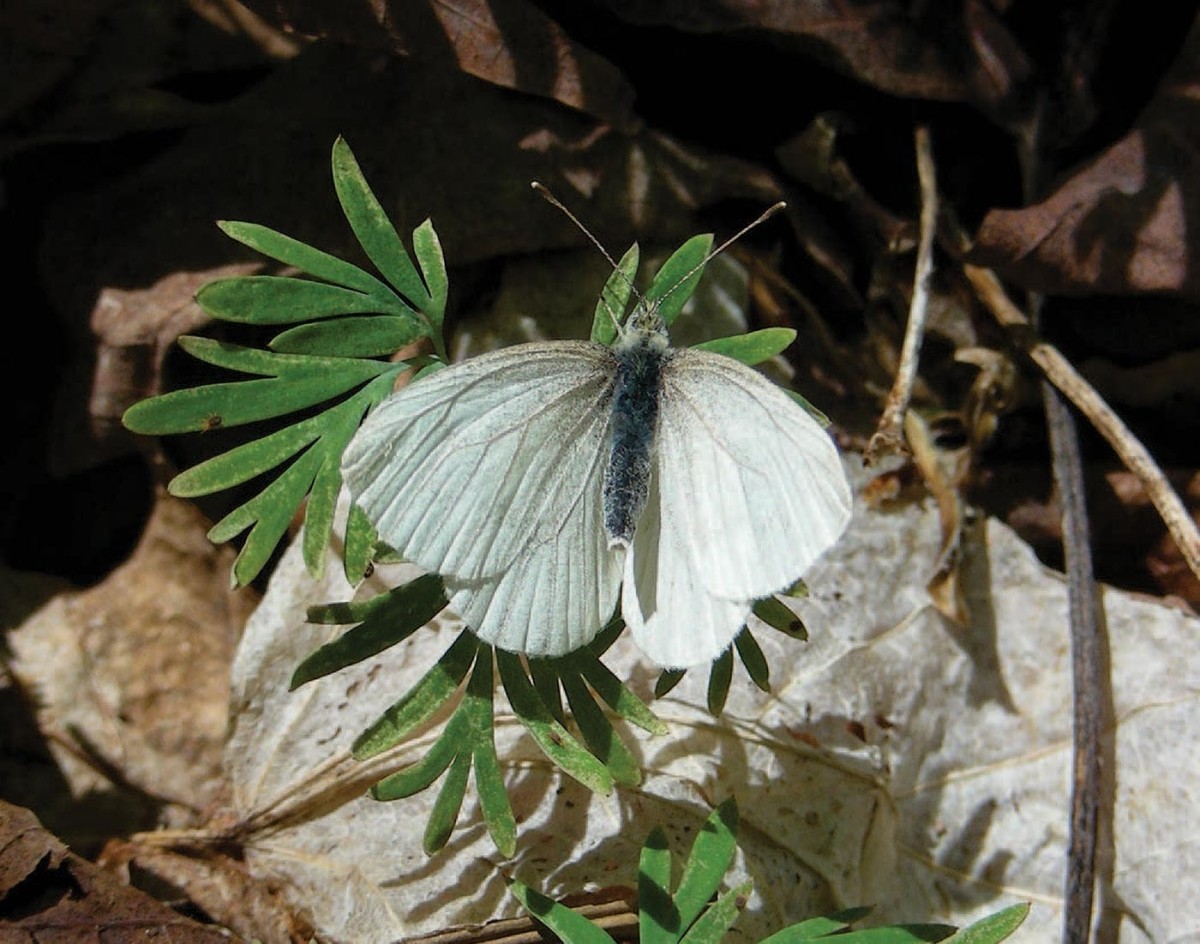
Between 60 and 80 percent of plants growing in the Northeast, including many of our food crops, need pollinators to reproduce. While many people associate pollinator habitat with wildflower meadows and backyard gardens, most pollinators rely on healthy, complex forests for food, shelter, and habitat. As forest managers and forest stewards, there are a number of steps we can take to ensure these pollinators have access to vibrant, high-quality habitat.
Most pollinators are invertebrates. While our most famous pollinator – the Eurasian honeybee – is not native, the Northeast is home to more than 400 species of native bees, including many that are important pollinators of wild and domestic plants. Other important invertebrate pollinators include butterflies, moths, flies, beetles, ants, wasps, and even slugs and spiders.
I manage forests for pollinator habitat in a few different ways. First, I make sure to keep snags and cavity trees standing, leave lots of deadwood on the forest floor, and retain a handful of legacy trees per acre. Snags and deadwood provide nesting habitat for many pollinators, most notably for solitary bees such as sweat bees and carpenter bees. Other native bees, including bumblebees, dig nests in leaf litter and forest soil, often in protected areas such as under the top of a fallen or felled tree. Older trees provide habitat for the many pollinators that utilize cavities and deadwood, as well as develop complex bark and canopy structure that harbor higher densities and diversities of invertebrates – especially moth and butterfly larvae.
Second, I manage forests for species diversity by encouraging a variety of different tree species. As detailed in Douglas W. Tallamy’s exceptional book The Nature of Oaks, invertebrates and plants (including trees) have complex evolutionary relationships honed over millennia. This co-evolution of plants and invertebrates has given rise to many pollinators that are dependent on groups of plant species, or even individual species, for some or all of their life cycle. Encouraging a diversity of trees, plants, and shrubs in our forests helps provide habitat for a diversity of native pollinators.
I also use management to encourage forests that are structurally diverse: forests with a complex, layered canopy punctuated by gaps. In general, multi-aged forests harbor a greater diversity of pollinators than even-aged forests, and canopy gaps increase invertebrate density and diversity. Just as different pollinators rely on different species of trees and plants, different species of trees and plants are adapted to openings of different sizes and to forests at different stages of development – from early successional forests to old forests – and so pollinators rely on them as well.
For example, clymene moth larvae depend on oaks as one of their host plants, while adults benefit from forest clearings, edges, and early successional forests, where there are more opportunities for nectaring. Cutting individual trees as well as groups of trees of different sizes creates growing space for new generations of trees as well as for the shrubs and herbaceous plants that are important to pollinators, songbirds, and other wildlife.
Finally, addressing forest health threats such as non-native invasive plants is an important part of managing forests for pollinators. Non-native invasive plants generally harbor much lower invertebrate density than native plants, displace host plants, and can even act as population sinks. An example of this effect is the relationship between invasive garlic mustard and the West Virginia white butterfly. The West Virginia white is adapted to lay eggs on native toothworts, but it will also lay eggs on garlic mustard, which is toxic to its caterpillars. Forests where garlic mustard spreads through the understory therefore contain a double hazard to the butterfly: the displacement of its host plant and the lure of a lethal imposter.
Many of the habitat features that pollinators require – deadwood, legacy trees, species diversity, structural diversity, and early successional habitat – are underrepresented on our landscape as a result of human land use during the past few centuries. Using forest management as a tool to create these attributes is one way to help pollinators survive and thrive. As with so many other things, when it comes to pollinators, forests are behind the scenes, subtly and unpretentiously making the world work. So, when managing for pollinators, it’s important to look beyond the meadow!


Discussion *